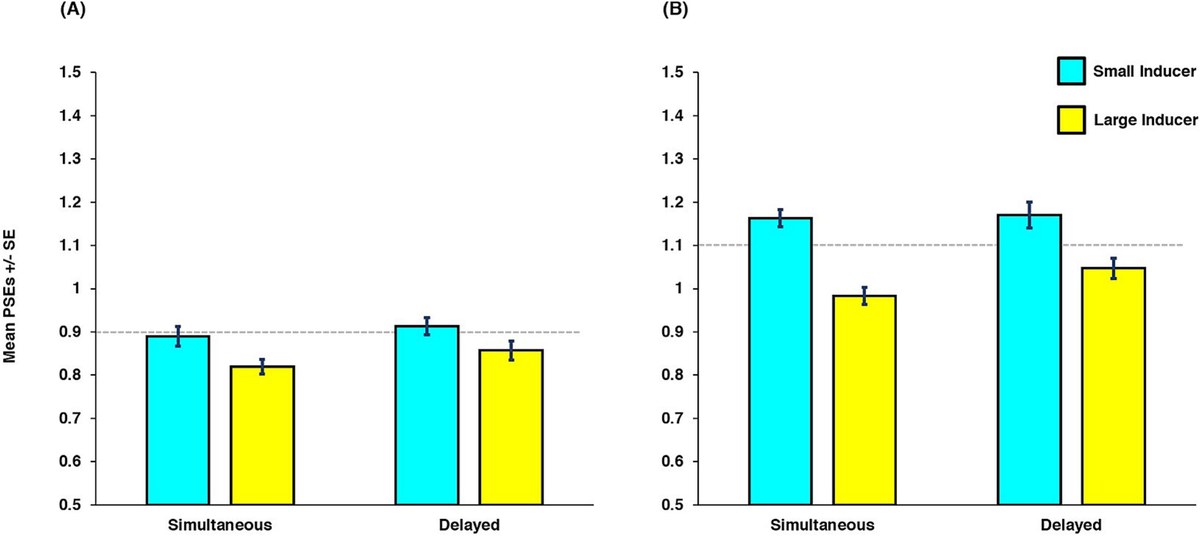Hidden size: Size representations in implicitly coded objects
Its angular representation on the retina does not solely determine the perceived size of an object. Instead, contextual information is interpreted. We investigated the levels of processing at which this interpretation occurs.
Combining three experimental paradigms, we explored whether masked and more implicitly coded objects are already size-rescaled. We induced object size rescaling using a modified variant of the Ebbinghaus illusion. In this variant, six dots altered the size of a central stimulus and served as inducers generating Object-Substitution Masking (OSM). Participants reported the average size of multiple circles using the size-averaging paradigm, allowing us to test the contribution of masked and non-masked central target circles (Fig. 1).

Our Ebbinghaus illusion variant altered perceived stimulus size and showed robust masking via OSM. Furthermore, size-averaging was sensitive enough to detect perceived size changes in the magnitude of the ones induced by the Ebbinghaus illusion. Finally, combining all three paradigms, we observed that masked and non-masked stimuli contributed to size averaging in a size-rescaled manner. In a control experiment testing the general effects of Ebbinghaus inducers, we observed a contrast-like effect on size averaging. Large inducers decreased the perceived average size, while small inducers increased it (Fig. 2).

In summary, our experiments indicate that context integration, induced by the Ebbinghaus illusion, alters size representations at an early stage. These modified size representations are independent of whether a target is recognisable. Moreover, perceived average size appears to be coded relative to surrounding perceptual groups.
Publication:
Memis, E., Yildiz, G. Y., Fink, G. R. & Weidner, R. (2024). Hidden size: Size representations in implicitly coded objects. Cognition, 256, 106041. doi: 10.1016/j.cognition.2024.106041
Correspondence to:
